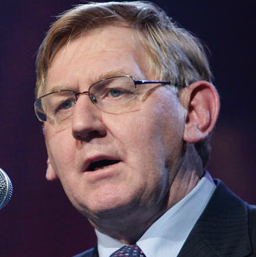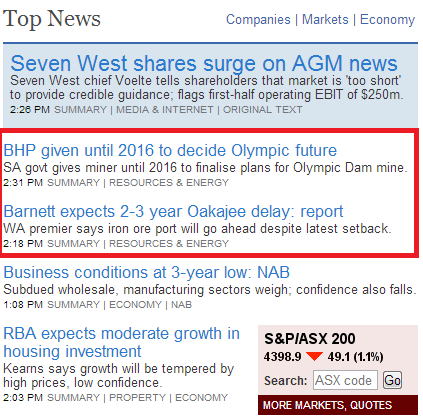
The AFR is running a blog from its resources conference in Perth today and offering periodic headlines including the following:
2.13pm: Energy Minister Martin Ferguson says he hopes the iron ore price will stabilise around the $US120 a tonne mark.
“That’s a real platform for us to sustain those projects,” he says.
The high iron prices enjoyed last year more than halved to about $US80 a tonne earlier this year before trending back towards $US120.
The Energy Minister also says Australia’s iron ore and thermal coal projects are now much more expensive to operate than those in competing jurisdictions, even though the cost of production was comparable just five years ago.
“We must face up to cost and price pressures,” Mr Ferguson says. “No-one owes Australia a living.”
As I’ve explained exhaustively, even if you believe in the “price floor” at $120, which I don’t , then it really only operates as a price ceiling anyway. That is, in an oversupplied market competing not on shortage but margins, more expensive Chinese production comes in and out as prices fall further below $120, not towards it from above.
The question that needs to be asked is what happens if iron ore ranges between $90 and $120?
The answer to that questions can be found in today’s NAB survey.
But apparently not over at Business Spectator, where the mining boom is only delayed:

Ain’t no bust here!
Some sense at least has come from Rio Tinto at the same conference:
After 26 years at Rio Tinto, David Peever has seen the resources sector move through its famed cycles.
The Rio Tinto Australia managing director says the market is facing “post-GFC adjustment pressures”.
“We’re in the throes of the deceleration right now,” Mr Peever says.
He says miners now operate in a period of: structural adjustment in China for commodity demand; cost escalations at projects; and a changing energy landscape.
“In this sector it is always necessary to take a long term view,” Mr Peever says.

